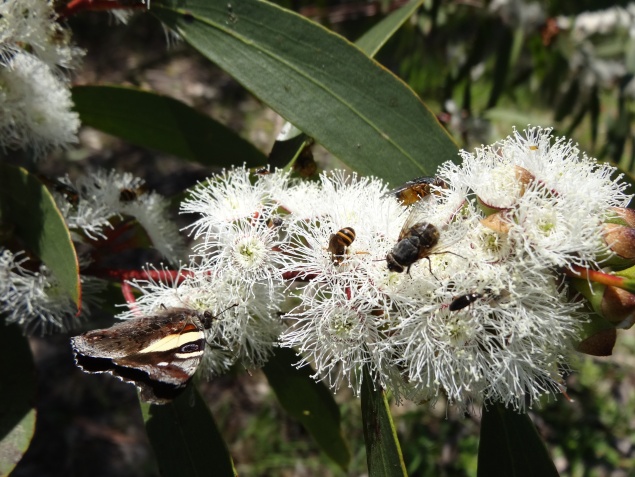‘Avoid repetition’. Most scientists had this command drummed into their heads early in their career. Science writing should be devoid of repetitive words and sentences. I had to include a preface in my PhD thesis to warn examiners of impending repetition…because my thesis chapters were published/submitted studies from the same system and with somewhat similar sampling methods.
Sure, thoughtless repetition of words and sentences does not make enjoyable reading in any discipline. But repetition of ideas and concepts is essential to storytelling and building memories. So when it comes to science communication, repetition is key.
Misinformation is spread through many sources, including vested corporate interests and media. One way to address this misinformation is by repeating facts, with minimal technical details.
Nothing illustrates this approach better, from both sides of the argument, than the global excitement over bees.
Another day, another ‘save the bees’ campaign*. Most people consider ‘bees’ to be the European honey bee, a single species out of the 20,000+ species of global bees, and one that is not endangered anywhere in the world.
Why do these campaigns gain so much traction? It’s not about the flowers seeds; it’s the re-enactment of the tired old pantomime that bothers me: ‘all pollinators are bees and all bees are honey bees’.
As a pollination ecologist, it’s frustrating seeing these campaigns resurrect repeatedly. I’ve been researching and writing about non-honey bee pollinators on this blog, and in other media, for years. A lot of other people, so much more well-known and with many more years experience than me, have been researching and discussing this issue for far longer! And proven solutions for ‘saving all the pollinators’ have been published in the scientific literature for decades…
So why?
This is marketing 101. Choose an on-trend issue (save the bees), pick a globally recognisable mascot (the honey bee, or sometimes the bumblebee), and promote some freebie or short-lived activity that lets customers feel that charitable feeling (free packets of seeds you can throw in the garden and forget about). Corporate social responsibility actions, like save the bees campaigns, are great marketing collateral.
Marketing is based on semiotics, the language of symbols. Consumers respond to metaphors, motifs and memories…all of which are portrayed effectively in good marketing campaigns. We humans connect over common ground. So repeating common storylines, however inaccurate, can have a powerful effect on common knowledge.
It’s easy to brush these campaigns off as ‘just another PR stunt’. But where is the creativity? Without the honesty of facts behind them, these campaigns are often short-lived. It’s really not hard to go a step further and include ALL the pollinators in a marketing campaign. Most graphic designers would be able to make a logo illustrating at least one non-honey bee pollinator. And printers would be able to print that logo.
Why is the honeybee usually chosen as a mascot? Probably because people are more likely to connect with an animal close to them. But the animals that are close and recognisable to humans are only a very small proportion of all the other species that have a similar functional role in the ecosystems around us.
So repetition is the key for science communicators. One blog, or one tweet, is not enough!
____________________
*I recommend this thoughtful piece that considers both sides of the story on the Cheerios campaign.

© Manu Saunders 2017
Thanks for the cite! I keep thinking about this issue over and over haha I agree with you that’s it’s a marketing campaign and oversimplified. But part of me wonders if this is an issue of scale. For example, you can either study interactions in great detail and report pollen deposition and seed set and fitness…or you can have a lot of species in your community that you know less about. There’s a trade off between depth and breadth…maybe that applies here too. It reaches a lot of people because of its simplified message?
LikeLiked by 1 person
Thanks for the comment. Agree with your point about trade-offs in research projects. A similar idea does apply in marketing campaigns, even though the overall goals are a bit different to research (hooking customers rather than discovering knowledge!). But I think there is also a trade-off in the other direction – in marketing campaigns over-simplification risks losing customer interest/trust and reducing the campaigns’ reach, especially for a situation like this where accurate information is readily available in popular media. It’s just lazy campaigning to rely on an over-simplified message.
LikeLiked by 1 person
Well, it is true that a lot of customers lost faith in them…You can see that from the reaction on social media!
LikeLiked by 1 person
I suspect honey bees are also popular because mention of them invokes the thought of honey, which is a universally loved sweet I guess.
LikeLike
Excellent post – nails it – and the other problem, particularity with honeybees, is that the research councils also seem to get taken in by the sales talk 😦
LikeLiked by 2 people